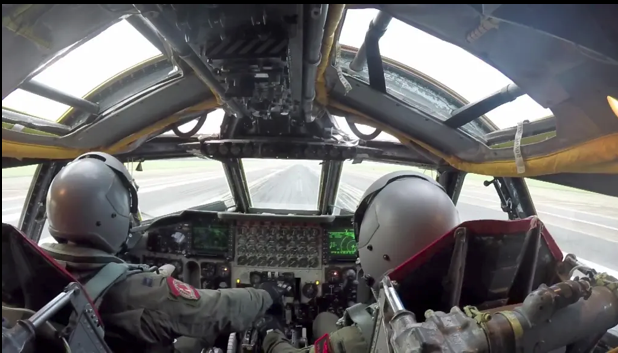Key Point Summary – B-2 Bombers Hit Iran
- Seven B-2 stealth bombers launched from Missouri
- Flew over 37 hours nonstop to strike Iran
- Hit nuclear targets in Natanz and Fordow
- Planes carried massive MOAB bunker-buster bombs
- Communication blackout kept operation covert
- Trump monitored raid in Situation Room
- Iran failed to detect or respond to attack
America’s Flying Shadow Strikes Iran
The world watched in stunned silence as news broke of a massive U.S. air operation targeting Iran’s nuclear facilities. It wasn’t just any strike. This was a shadow mission—code-named Operation Midnight Hammer—carried out by America’s most secretive weapon: the B-2 Spirit stealth bomber.
Seven of these futuristic aircraft, often compared to a real-life Batwing, flew for more than 37 hours straight. Their mission? Penetrate Iranian airspace and hit two of the regime’s most protected nuclear sites—deep underground.
This is now the longest bomber flight since America’s war on Afghanistan in 2001. And it may go down in history as one of the most precise, daring, and high-stakes operations the U.S. military has ever executed.
Into the Skies With a Deadly Load
Each B-2 bomber lifted off from Whiteman Air Force Base in Missouri. Onboard were two GBU-43/B Massive Ordnance Air Blast bombs—nicknamed the “Mother of All Bombs.” These behemoths each pack the force of 11 tons of TNT.
The planes took off under cover of darkness. They crossed the Atlantic, slipped through the Mediterranean, and homed in on their targets in Natanz and Fordow—both buried nuclear facilities the U.S. has long warned could spark a global crisis.
What makes this even more chilling? The bombers flew in complete silence. Radio comms were shut off. No chatter. No warning. Just a silent approach and a devastating blow.
Iran Never Saw It Coming
Iran didn’t fire a single shot. Not one. The bombers were already gone by the time Tehran figured out what had happened.
Multiple U.S. fighter jets, drones, and support aircraft provided silent cover. If Iranian defenses had flared up, they were ready to strike back instantly. But the attack came and went without a ripple.
“We flew in. Hit. We left. They never knew,” said Joint Chiefs Chairman Dan Caine. “This was stealth perfected.”
It’s a humiliation for Iran’s air defenses—and a victory for American military precision.
Coordinated Silence, Ruthless Accuracy
This wasn’t just a bombing run. It was a symphony of silence and speed. According to top U.S. officials, the B-2s had to time their approach to the second.
“This was synchronized across multiple aircraft, over a tight air corridor, with minimal communication,” Caine revealed. “Any slip could have exposed the whole mission.”
And yet it worked like clockwork. The entire raid over enemy territory lasted just 25 minutes. Then the aircraft turned around and headed back across the globe—retracing their 18-hour route home.
Inside the Bomber’s Cockpit: 37 Hours of Hell
Pilots flew the 52-meter wide bombers with nerves of steel—and very little rest.
Each aircraft was equipped with a tiny toilet, a microwave, and a mini fridge. One pilot could nap on a folding camp bed while the other flew. But breaks were brief. Focus was absolute.
Automated flight systems helped reduce fatigue, but nothing could fully ease the mental toll. “You don’t blink on a flight like this,” said a retired B-2 pilot. “Every second counts.”
At $2 billion per aircraft, losing even one would’ve been catastrophic. Only 19 of these bombers exist. One crashed in 2008.
Trump Watched It All in Real Time
President Donald Trump, now 79, watched the mission from the White House Situation Room. Top advisors, military brass, and intelligence officials surrounded him as the stealth fleet punched a hole in Iran’s nuclear ambitions.
“No other military in the world could pull this off,” Trump declared, beaming with pride as the planes made their return journey. “This was a message. Loud and clear.”
The message? America still dominates the skies—and it won’t let Iran go nuclear on its watch.
Iran Scrambles for a Response
Tehran is reeling. The strikes struck at the heart of its nuclear strategy. Iranian media is downplaying the damage, but satellite images tell another story: scorched earth, collapsed bunkers, and radioactive fears.
State TV showed calm faces and vows of vengeance, but insiders say confusion and panic are mounting. Supreme Leader Ali Khamenei has summoned emergency military briefings. Revolutionary Guard units have gone on alert.
Iran’s foreign minister issued a vague condemnation, warning the U.S. of “grave consequences.” But no retaliation has followed—yet.
Global Fallout: Allies Nervous, Enemies Watching
World leaders are reacting with caution.
Israel quietly expressed support. Saudi Arabia remained silent. European allies urged calm but stopped short of criticizing Washington.
Meanwhile, China and Russia condemned the move. Moscow called it a “reckless escalation.” Beijing warned of “regional instability.”
Markets responded with a jolt. Oil prices spiked. Defense stocks soared. And millions began asking: Is this the start of something bigger?
Americans React With Awe and Anxiety
At home, public reaction is split. Some praised the show of force. Others feared another drawn-out conflict.
Social media lit up with images of the B-2s in flight, their sleek wings silhouetted against the sky. Veterans posted messages of pride. Peace activists warned of blowback.
Cable news ran grainy infrared footage from the mission. Commentators argued late into the night—was this brilliance or brinkmanship?
For now, Americans are left holding their breath.
What Happens Next?
The Pentagon says the mission is over. But military analysts aren’t so sure. More assets have been moved into the Gulf. Drone surveillance over Iran has doubled.
A second wave? Possible. Diplomacy? Unlikely. Tensions haven’t been this high in years.
And all eyes are now on Iran.
Will it retaliate? Or retreat?
One thing’s for sure—the balance of power just shifted.
And the B-2s are back in their hangars…for now.




